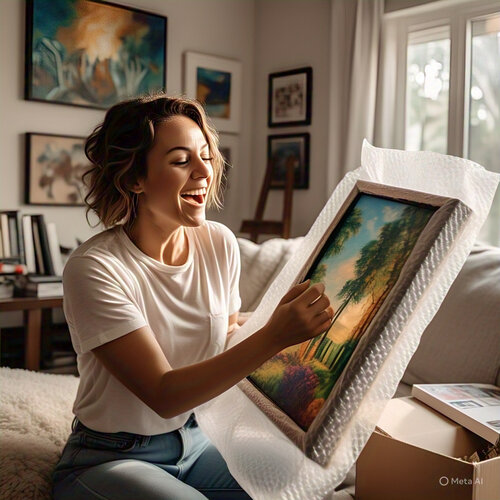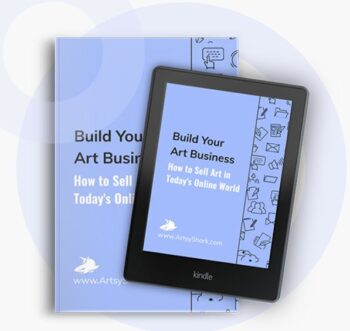by Carolyn Edlund
Step into the shoes of your customers to understand what they need from you to help make a buying decision.

Art collectors may fall in love with your work at first glance—but emotion alone usually isn’t enough to close the sale. When someone is considering an investment in your art, they need much more than just a beautiful image. They’re weighing their own needs, wants, and practical concerns. It’s your job to give them the information that helps tip the scales in your favor.
Whether a collector is new to buying art or has built a sizable collection already, their decision process often hinges on three core things: how your art benefits them, the practical details of the purchase, and whether they can trust you. Let’s explore what that means in practice, and what you as the artist can do to support the process.
Show the Benefits, Not Just the Features
Artists often describe their work in terms of medium, technique, or inspiration. That’s important background, but collectors are thinking about how the artwork fits into their life. Will it elevate the feel of their space? Reflect their personality? Make a statement or spark conversation?
This is where translating features into benefits becomes key. If your paintings are wired and ready to hang, that’s a convenience buyers appreciate. Are they created with archival materials, UV-resistant inks, or eco-friendly processes? That adds value and peace of mind. And if they’re signed and come with a Certificate of Authenticity, that enhances their collectability.
Think also about framing and presentation. If your work fits standard frames, or you offer framing services, say so. Better yet, show your art in context by using in situ photos or virtual mockups that help collectors imagine your work in their own space. These visual cues do more than words can.
Cover the Practical Details
Once a collector is genuinely interested, the next question is often, “How does this work?” Transparency builds confidence, and that means clearly explaining the logistics.
Share your terms and policies. This might include pricing, shipping, packaging methods, and if insurance is included. You should also clarify whether you take returns, how long it takes to fulfill an order, and your policies on taking art commissions. It’s also a good idea to let buyers know how your art should be cared for by providing cleaning and other instructions. This is especially relevant for delicate materials or artwork that need special handling.
Don’t make people dig for this information. The easier it is to find, the more comfortable they’ll feel. An FAQ or “How to Buy” section on your website covers these topics and will result in more transactions.
Build Trust Step by Step
Art collectors need to believe in both the artwork and the artist. That trust comes from professional presentation and consistent communication. Every part of your public-facing brand should reflect credibility, reliability, and pride in your work.
Make sure your website includes your artist bio, your CV or credentials, and any exhibitions or awards you have earned. This increases your credibility as an artist, which goes a long way with buyers. Also include any testimonials you have from existing customers (ideally with names and photos).
Don’t underestimate the power of simple availability. A contact form, email, or phone number where buyers can reach you with questions should be available if you are truly interested in selling. These conveniences, along with prompt, courteous replies, will go a long way toward reinforcing trust.
Are You Giving Collectors What They Need?
Take a moment to walk through your own buying experience, as if you were the customer. Is everything clear? Do the benefits shine through? Is it easy to understand what happens next?
Listen carefully to the questions buyers ask. If something comes up repeatedly, that’s a signal to make the answer more accessible. Art collectors may start out driven by emotion, but they finish the buying process with information—and it’s your job to provide it. When you do, you make it easier for people to say yes to your work.




Speak Your Mind